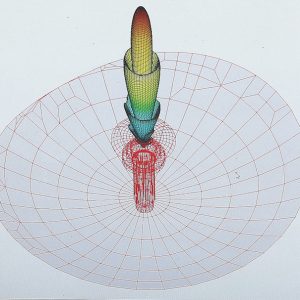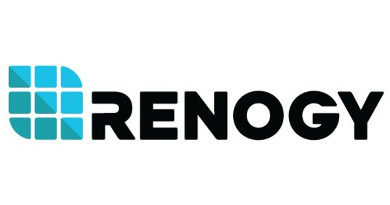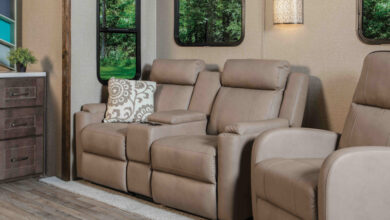Winegard Tuned in to the RV Market

When John Winegard started his TV antenna business in earnest in 1954, telephones came with party lines, Russia’s Sputnik satellite was still years away and black-and-white television was a novelty in many parts of the country.
Initially working out of his garage, Winegard turned his background in radio repair from his time in the military and his fascination with the emerging medium of television into a successful business that today is a cutting-edge manufacturer and global distributor of high-tech antennas for consumer and commercial applications, including the RV industry. Along the way, the business has grown to employ more than 450 people at the company’s 400,000-square-foot headquarters and manufacturing facility in John Winegard’s hometown of Burlington, Iowa, located in the southeastern portion of the Hawkeye State.
Tuned in to Opportunity
Winegard’s roots in making TV antennas pre-date the founding of his company by several years. The story goes that when President Harry Truman was being inaugurated in early 1949, Winegard wanted to watch the festivities, which were being broadcast on a Chicago television station some 200 miles away.
In what current Winegard President Grant Whipple calls “a really great inventor-in-a-garage story,” John Winegard designed an antenna to pick up that signal.
“Soon, everybody started saying, ‘I want one of those,’” Whipple says. “It really took off.”
Still, the company might have remained a one-hit wonder had Winegard not realized that a TV antenna that received one channel wasn’t enough. Instead, he designed and patented an antenna that allowed people to watch multiple channels from one antenna.
It was with the development of that product that he bought out an early partner and incorporated the Winegard Co. 64 years ago.
In the years since, the company has had a remarkable eye for what’s next in the market. Over the decades, Winegard has manufactured tracking antennas for some of the country’s first satellites and gotten into the production of satellite dishes, from the 6- to 10-foot behemoths of early cable to today’s mini-sized receivers for DISH Network and DirecTV.

Nor were satellite receivers the only products Winegard shrunk. As the company worked to reduce the size of its other offerings, it developed the Sensar electronic antenna. The company’s antennas had been mounted on RVs for years, but when the so-called “batwing” hit the market it was quickly recognized as a natural for motorhomes and towables.
“They developed a mount to go on an RV and, of course, it experienced wild success,” says Whipple. Even today, it represents a standard for most RV OEMs.
However, the story doesn’t end there. Today, the company – indeed, the entire world – is about connectivity.
“We continue to evolve with our over-the-air and satellite TV products, but with the huge demand for Wi-Fi, and Internet connectivity, we’ve evolved into satellite Internet for various applications,” Whipple says. “All these different Wi-Fi and LTE (long-term evolution) products use different frequencies and spectrums to work, and we continue to evolve and produce products for the telecom companies.
“We’re particularly focused on bringing technologies that are in the house to the mobile and RV environments,” he adds.
Innovation & Training
It’s the ability to produce innovative products that keep a user connected – anywhere, anytime – that continues to make Winegard an exciting place to work, according to Whipple.
Today, the company easily produces more than 500,000 antennas each month.
Just how much of that is destined for the RV market, Whipple declines to say. However, he says the company’s mobile division represents a large portion of Winegard’s output, and “our RV segment is extremely important to our business.”
So important that in late summer of 2017, the company opened its Innovation Center in Elkhart, Ind., to serve the RV industry. Winegard also operates two remote engineering sites, in Quincy and Elgin, Ill.
Whipple says part of the reason behind the Innovation Center is to make it easier for the company’s RV customers to work with Winegard on product development.
“We have trucks delivering product daily to the Elkhart area, but it’s about a five-hour drive from Burlington,” he says. “It’s tough for a lot of our customers to come here to work on product development, so we’ve tried to make it convenient for them to learn about different technologies and how the changes in technologies are going to impact their different products and their customers.”
Todd Wibben, the general manager of Winegard’s mobile division, adds that the center allows his team to work on more than just products with the RV OEMs.
“We also have a training center there,” Wibben says. “It’s not unusual for us to have 18 to 20 people in for classes, some of them from the OEMs and some from the dealers.”
Both aspects of the RV chain are important to Winegard. For instance, the company estimates that as many as 90 percent of all RVs have a wireless antenna to receive over-the-air digital HDTV that is installed at the factory.
As for some of the other technologies the company offers, Whipple says they may or may not be factory installed, although as the need for connectivity grows the OEMs are rethinking that.
“As you move into the Wi-Fi products, the LTE products and the satellite products, a lot of times because of the different providers someone may sign up with and the different styles of them, those lean a little more toward the after- market side,” Whipple says. “Obviously, some of the higher-end RVs are putting multiple technologies and multiple products on at the factory.”
A good example is the agreement Winegard reached last year with Thor Motor Coach to install its ConnecTV package as standard in Thor’s Tuscany line of coaches. Meanwhile, early this year, the company unveiled a special option of its ConnecTV 2.0 for the OEMs that offers an expanded version that includes a hot spot with Wi-Fi and 4G LTE, as well as an upgraded HDTV antenna and FM radio. The package is available for both Verizon Wireless and AT&T customers.
“It used to be people wanted to be able to watch TV while they were on their camping trips,” Whipple says. “Now, we’re adding Wi-Fi and 4G LTE because surveys show it’s becoming just as important to send photos or check emails.
“We really see the wireless technologies becoming more and more of a standard in the next few years,” he adds.
The Word Is ‘Connectivity’
Whether the company’s products are being installed by the OEMs or sold to RV owners through dealers, an important part of Winegard’s job is education. Wibben estimates the company has trained a multitude of OEM staff plus as many as 3,000 to 4,000 dealership personnel on the use of its products.
“That’s why we have such a good relationship with them,” Wibben says. “We are the experts; we know what the consumers are looking for and what’s going to sell. They don’t have to understand that. We have an impressive network of sales reps in the field who communicate those technologies, make sure they know what the coming things are, and they understand the technology they’re selling.”
And, how does Winegard keep on top of the next big trends in its markets? It starts with consumer research, but that’s only the tip of the iceberg.
“We have tight relationships with the cellphone carriers, and with the telecoms of the world,” says Whipple. “We produce products for them. For instance, we design and manufacture satellite dishes for some of the largest satellite telecoms in the world.”
Whipple adds that those businesses are the companies that are behind the still-upcoming 5G networks and the technologies that are going to be powering them.
“By working hand-in-hand with those telecoms, that allows us to see the future,” he says. “Then, by bringing those products to specialized markets – like RVs – we can make the design changes to allow them to be rugged and withstand the rigors of being on the roof of an RV, for instance.”
The company is justifiably proud of its entire R&D operation (and of the 90 some patents the company holds), but Whipple says an added benefit to Winegard’s customers is its complete environmental testing lab.
“We have hot and cold chambers, salt-spray chambers, and we test for humidity and rust, as well as vibration,” he says. “We want our products to be able to with- stand the sorts of conditions they’re going to experience going down the road. We’re not only looking at R&D on new types of antenna technologies, but also constantly developing those that will withstand the worst case in different environments.”
While 5G is certainly the brightest star on the technology horizon, it’s definitely not the only one. Whipple says Winegard also is focused on something called ATSC 3.0, which will move over-the-air antennas to more of an Internet protocol base and will give users 4K resolution and perform other types of interactive features like a cellphone.
The company also is working on new satellite technology that will deliver what he calls “5G-type speeds.”
For now, however, the company’s most-popular add-on is its low-cost satellite dish, known as the Playmaker, which automatically finds the proper satellite and signal when an RV user changes channels.
“It’s the lowest-cost portable ever developed for satellite TV,” Whipple says. “It’s been a real breakthrough and people have been very excited about the performance it gives them. It’s been extremely well-received.”
Regardless of the product, however, Winegard executives agree their marketing is helped by an extensive dealer network, trained technicians – and the simple fact that it’s a company that’s been in existence for years and sells way beyond the RV market.
“We have a big breadth of products,” Wibben says. “We have a lot to offer, and our brand is bigger because we’re in other markets such as trucking, marine and satellite dishes. People know about us from other walks of life.”
Asked about the company’s biggest challenge, Whipple says it’s that continued rapid shift in technology.
“For decades people took their TV signal from an antenna,” he says. “Then, we went to satellites. But, you look at a cellphone, and 10 years ago you couldn’t watch a video over a wireless network. Now, we’re streaming millions of hours over wireless networks. We have to keep aligning our products to the newest iterations and our product development has to accelerate.” Fortunately, Whipple sees it as a good s challenge, especially given Winegard’s track record for continuous innovation. As for where the company will be d five years from now, Whipple says it will be continuing to offer quality and reliability – and it will likely be focused on connectivity.
“We’ll be delivering high-performance connectivity to people around the globe,” he says. “We feel very, very strongly about that. We might be connecting them to, drones, or other devices, but we will be enabling those devices to work in areas both where they work today and where it was previously impossible because there was no connectivity.”


